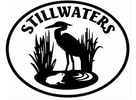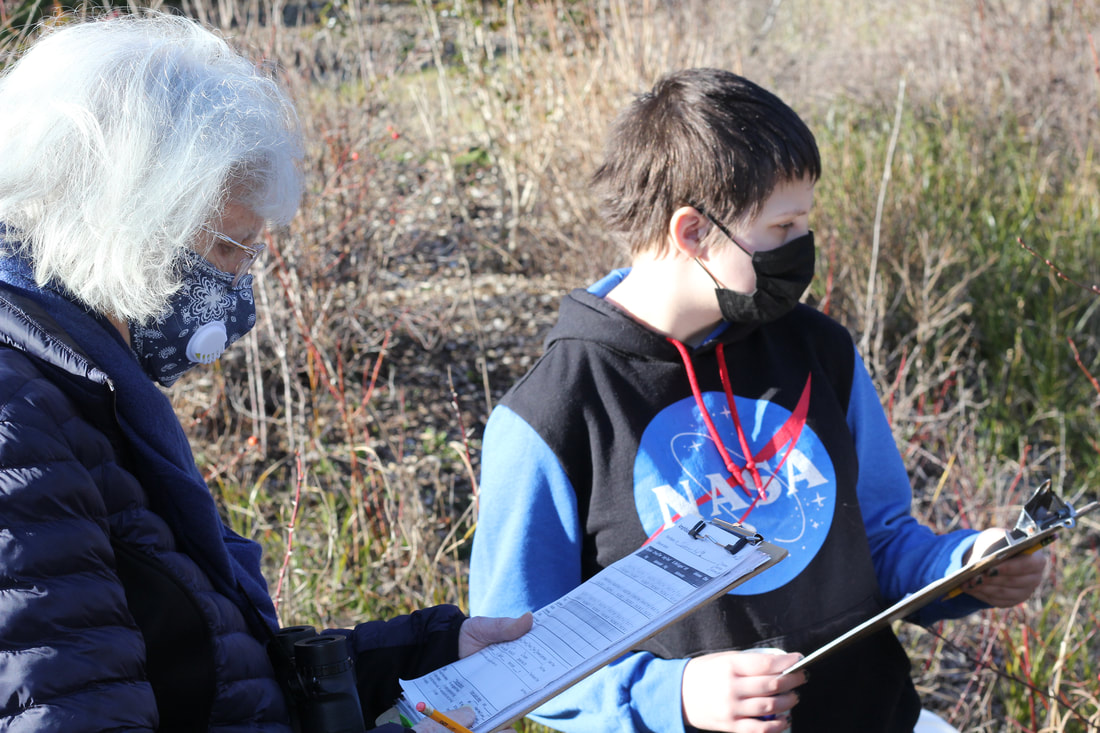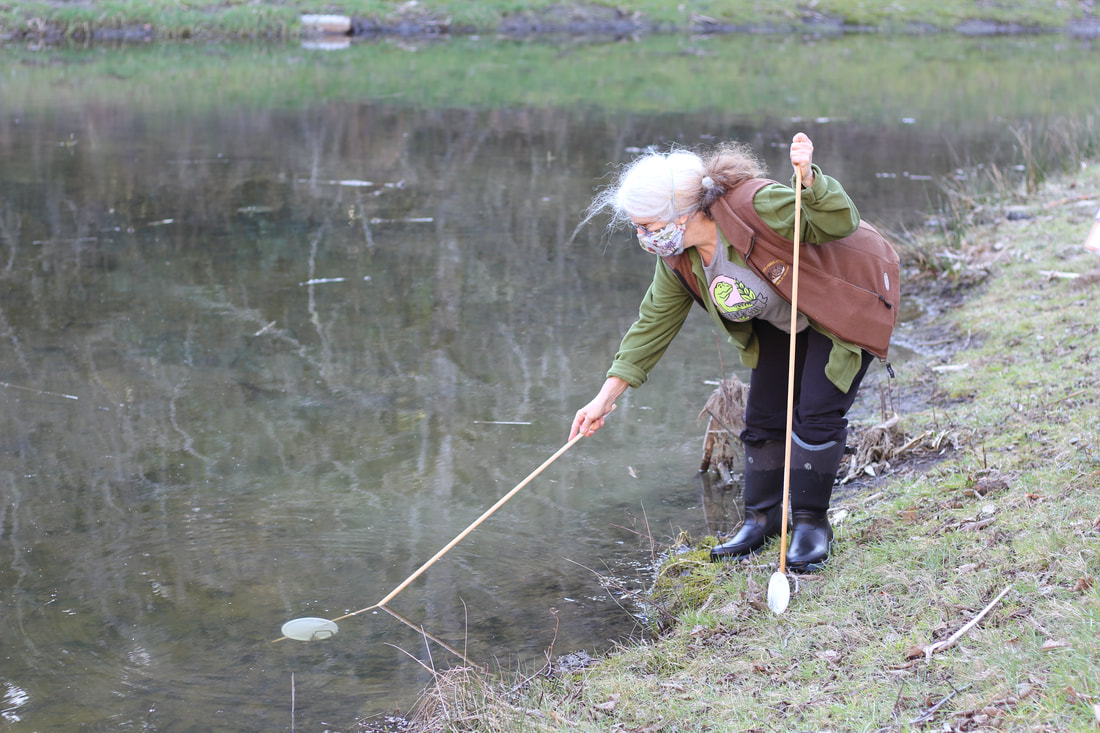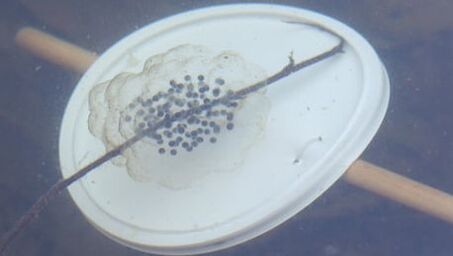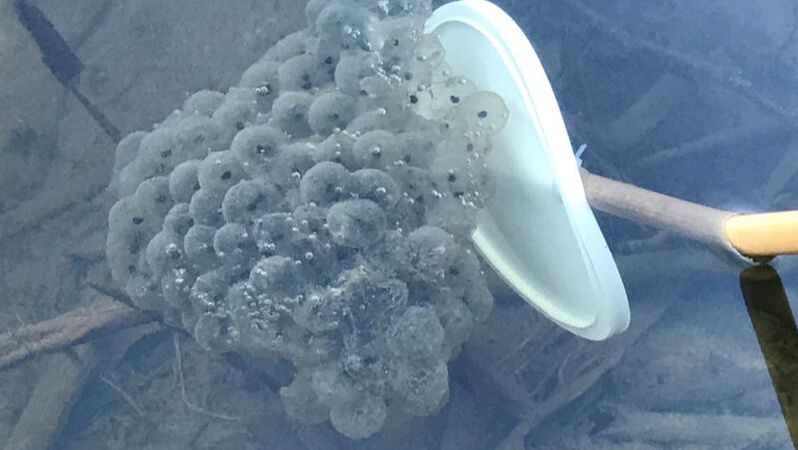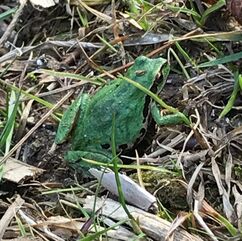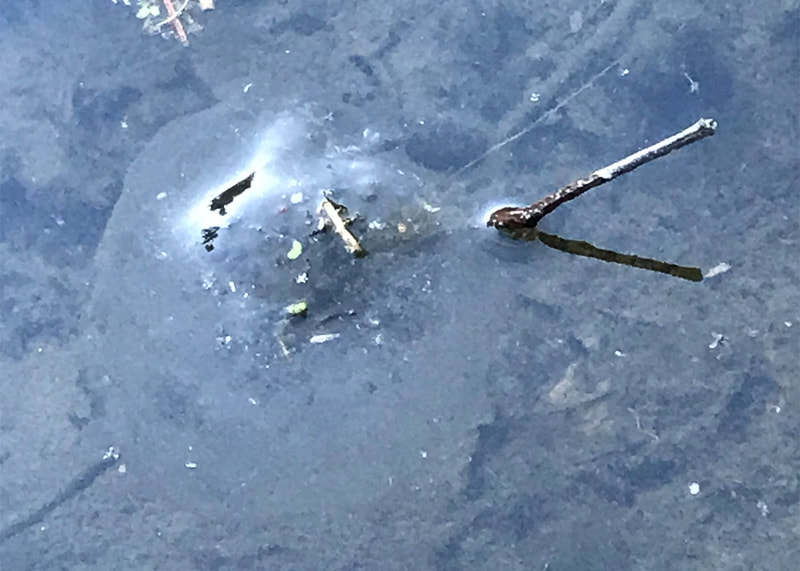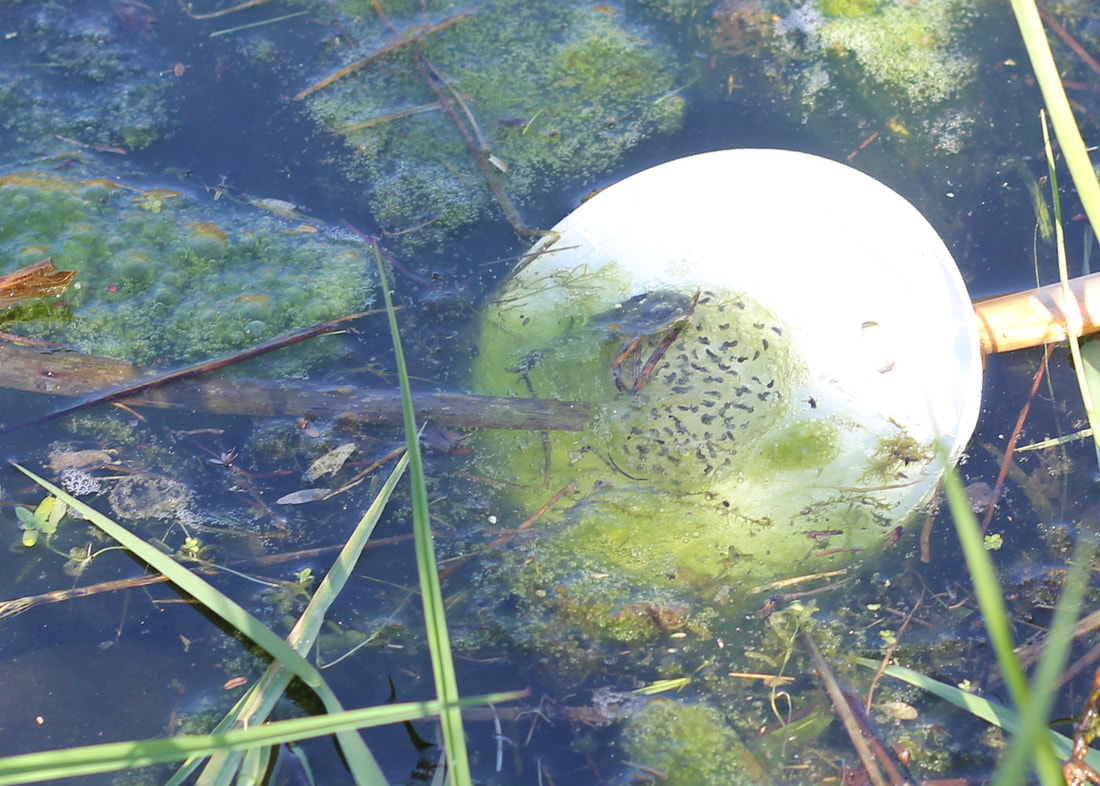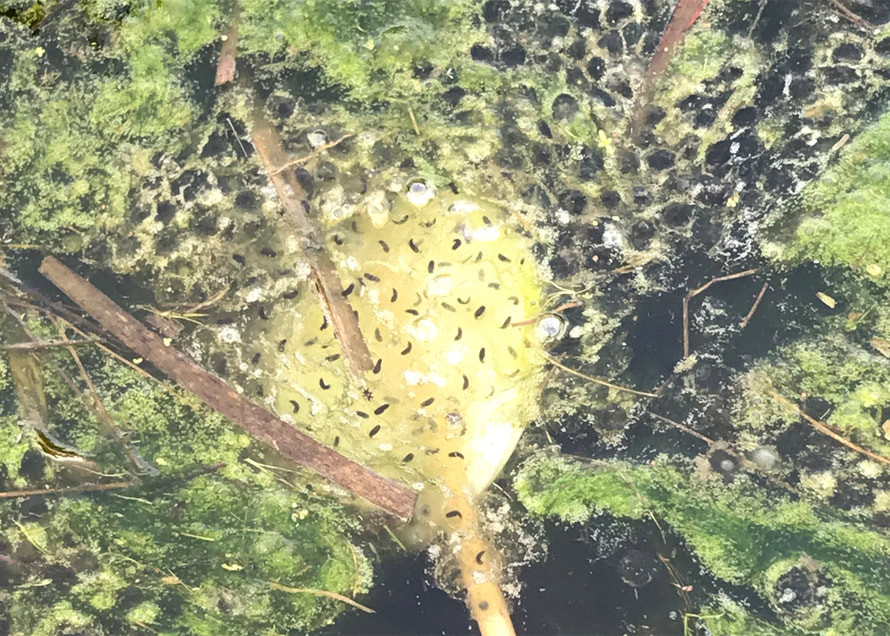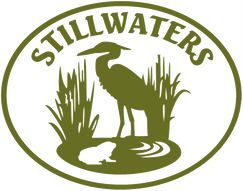- Stillwaters’ Amphibian Egg Mass Monitoring is part of a county-wide program by Kitsap County Public Works Stormwater Division to document frog and salamander use of county stormwater ponds as breeding sites.
- This monitoring program will help inform future county maintenance of stormwater ponds and help develop more amphibian-friendly practices.
- For more information on Kitsap County’s Amphibian Egg Mass Monitoring and how to participate in your area (even from your own pond!), please contact Renee Scherdnik, at [email protected].
|
NORTHWEST SALAMANDER EGG MASS
|
RED-LEGGED FROG EGG MASS
|
|
PACIFIC TREE FROG (February 2021)
|
Recently, Stillwaters volunteers found 100 more Pacific tree frog eggs masses than they did two weeks ago. This is not surprising given the increasing din of nighttime frog choruses after our cold snap in February! If you should hear a frog call that sounds like a “bango twang” (instead of “ribbit, ribbit,”) you might be hearing the non-native Green frog. Stillwaters would like to remind everyone to be on the lookout for this potentially invasive species that can be identified by the prominent eardrums right behind its eyes. In the native Pacific tree frog or northern red-legged frog, the eardrums are significantly smaller and hidden by a dark “mask.” If you think you’ve seen or heard Green frogs, please let us know when and where by calling Stillwaters Environmental Center at 360-297-1226 or e-mailing our Program Director at [email protected] .
|
Stillwaters’ staff and volunteers continue amphibian monitoring twice a month until early summer. Assisting Dr. Fleming was Program Assistant, Jenna Wright, and volunteers, Gloria Hill and Elizabeth Williams. Stillwaters’ data are reported back to Kitsap County including details on amphibian species, egg stage of development, and to what the egg mass is attached. For more information on the Green frog, CLICK HERE to visit our Green Frog Monitoring page.
